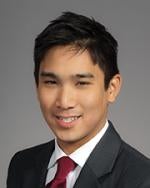Addressing the admissibility of expert evidence, Circuit Judge Timothy Dyk, sitting by designation in the U.S. District Court for the Eastern District of Texas, excluded the plaintiff’s damages expert’s opinion because the expert used a multivariate-hedonic-regression analysis, a methodology that the court characterized as an impermissible rule-of-thumb calculation loosely untethered to the particular facts of the case. Stragent, LLC v. Intel Corp., No. 6:11-cv-421 (E.D. Tex., Mar. 6, 2014) (Dyk, J., sitting by designation).
Plaintiff Stragent sought to rely on the expert opinion of Dr. Vellturo regarding damages. Dr. Vellturo applied multivariate-hedonic-regression analysis in support of his opinion. Under his analysis, Intel’s accused product included nineteen features related to reliability, availability and service (RAS), and the feature Stragent accused of infringement was only one of those 19 RAS features. Dr. Vellturo determined that the 19 RAS features altogether accounted for 42 percent of the accused products’ average price. The accused feature was only one of the 19 features, and Dr. Vellturo had no way to determine how much of the 42 percent to apportion to the one accused RAS feature. So, using a multivariate-hedonic-regression analysis, Dr. Vellturo simply divided the 42 percent equally among the 19 RAS features, which led to the conclusion that the accused feature accounted for 2.2 percent of the accused products’ price. In other words, Dr. Vellturo determined that each of the 19 RAS features should be accorded equal value.
Judge Dyk excluded Dr. Vellturo’s opinion because Dr. Vellturo had no basis for assigning equal value to each of the 19 RAS features. Without a factual basis, the court found his analysis to be nothing more than an impermissible rule-of-thumb calculation under Uniloc. Before Uniloc, damages experts sometimes relied on a similar 25 percent of profit rule of thumb to calculate a reasonable royalty. Damages experts would often testify that, in a hypothetical negotiation, a defendant would agree to a reasonable royalty rate of 25 percent of an accused product’s expected profits. In Uniloc, the Federal Circuit rejected the 25 percent rule of thumb when untied to the case’s particular facts. Here, Dr. Vellturo in effect used a 1/19 rule of thumb without tying it to the particular facts of the case.
The court rejected the plaintiff’s argument that Dr. Vellturo’s opinion was admissible because it was “conservative,” or on the low end of the range of possible values. Dr. Vellturo based his opinion on an internal Intel document, which listed the 19 RAS features in a numbered list, the accused feature being number three. The plaintiff argued that because the accused RAS feature ranked high on the list, assigning the accused feature a value equal to lower-ranked features was conservative and therefore admissible. Judge Dyk disagreed. As a factual matter, the internal Intel numbered list was not a ranking of value. Moreover, even if it was, Dr. Vellturo should not have relied on an internal Intel document so “rife with bias and variability.” Daubert requires reliable scientific opinions, and a “conservative” opinion is not the same as a “scientific” one.



 />i
/>i

